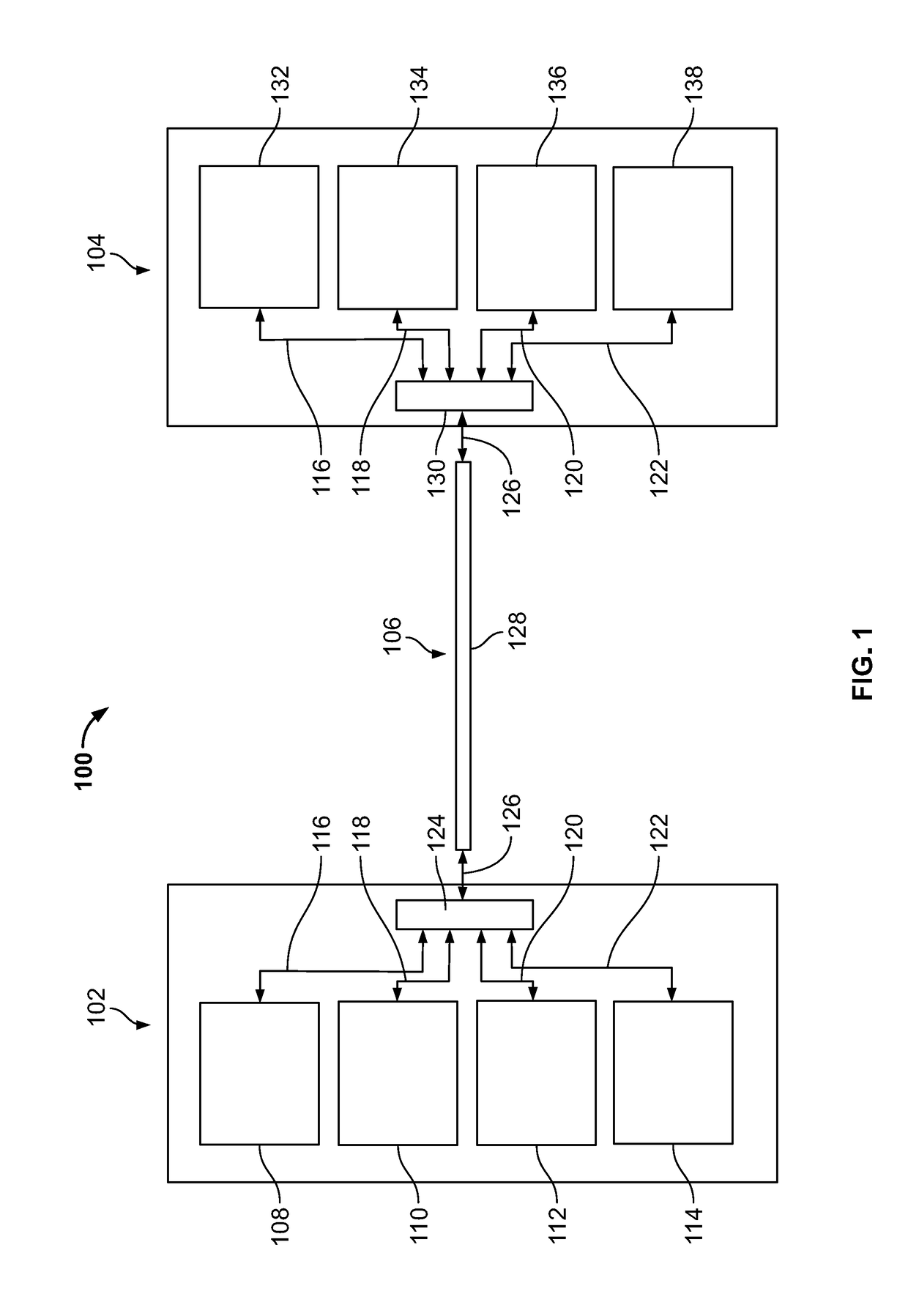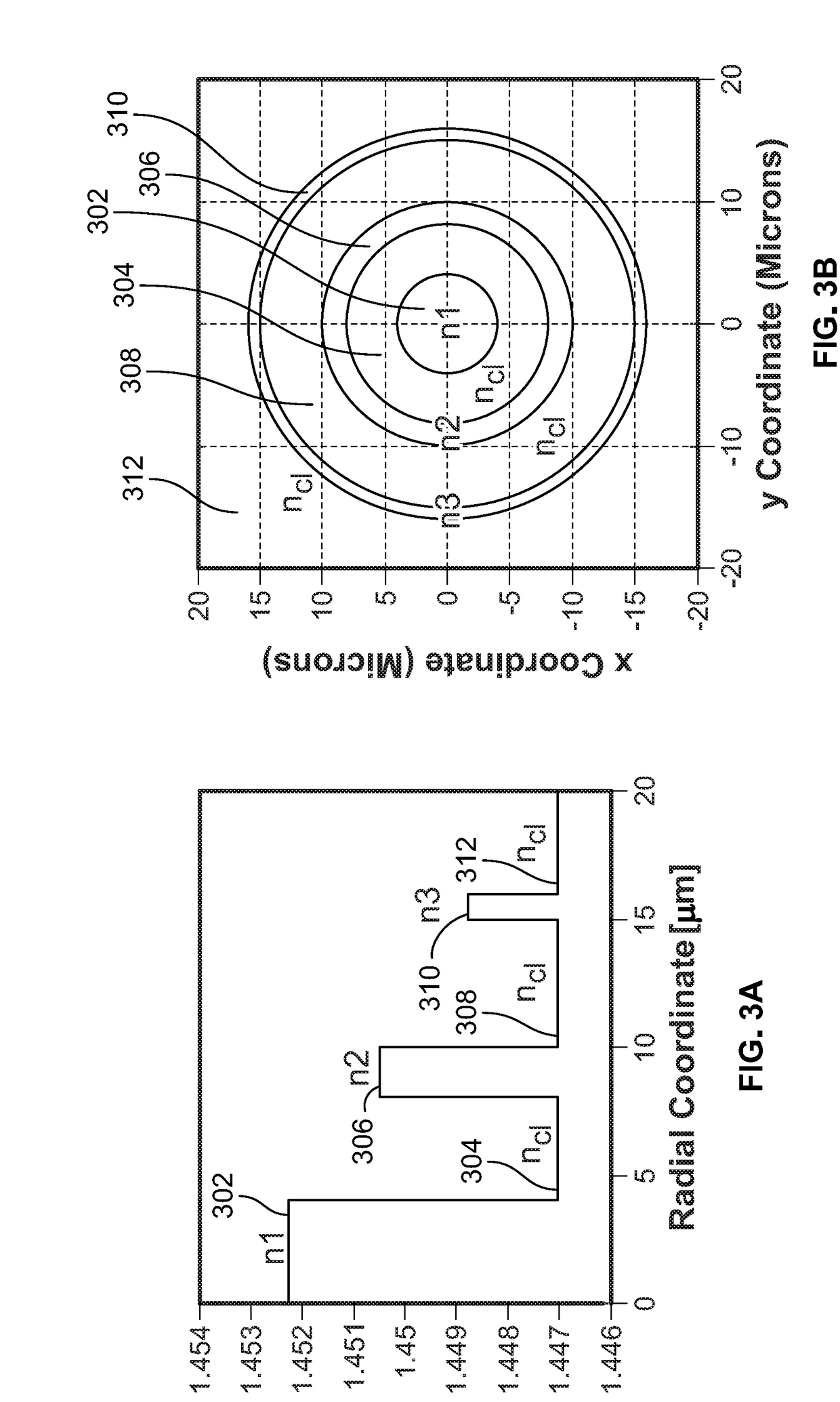Concentric fiber for space-division multiplexed optical communications and method of use
a technology of space-division multiplexing and optical communication, applied in the field of optical communication, can solve the problems of increasing the crosstalk between cores or modes with transmission distance, smf optical transmission systems now approaching intrinsic capacity limits, and unable to meet future capacity requirements
- Summary
- Abstract
- Description
- Claims
- Application Information
AI Technical Summary
Benefits of technology
Problems solved by technology
Method used
Image
Examples
Embodiment Construction
[0024]The present invention is directed to an approach to space division multiplexing (SDM) that makes use of concentric ring cores. Where the rings are separated relatively far away from each other and / or the refractive index difference between a ring and the cladding is sufficiently large, the modal electromagnetic fields are relatively strongly bound to the individual rings. The modal fields bound to a particular ring may constitute an independent transmission channel. The multitude of modal fields that may exist for a particular ring can facilitate space division multiplexing to be employed on a ring level. Since the concentric ring cores can be implemented in a circularly symmetric geometry, connectivity of such a fiber is simpler than with a multiple core fiber (MCF), which requires rotational alignment about the fiber axis to ensure that the cores are aligned with their respective mates.
[0025]In other cases, where the rings are located closer together, and / or the refractive i...
PUM
 Login to View More
Login to View More Abstract
Description
Claims
Application Information
 Login to View More
Login to View More - R&D
- Intellectual Property
- Life Sciences
- Materials
- Tech Scout
- Unparalleled Data Quality
- Higher Quality Content
- 60% Fewer Hallucinations
Browse by: Latest US Patents, China's latest patents, Technical Efficacy Thesaurus, Application Domain, Technology Topic, Popular Technical Reports.
© 2025 PatSnap. All rights reserved.Legal|Privacy policy|Modern Slavery Act Transparency Statement|Sitemap|About US| Contact US: help@patsnap.com



